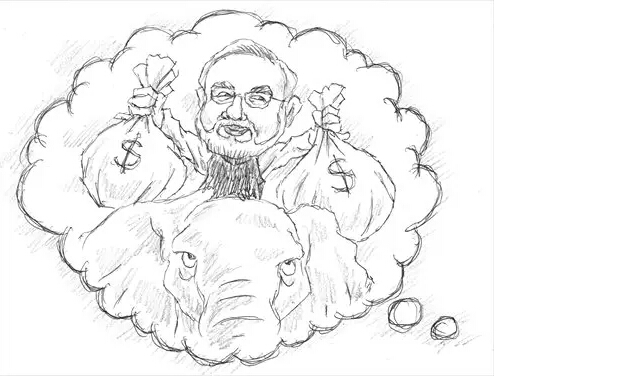India must beware pitfalls in push for rapid growth
- By Zhang Jingwei
 0 Comment(s)
0 Comment(s) Print
Print E-mail Global Times, June 7, 2016
E-mail Global Times, June 7, 2016
India's last five-year plan is set to end in 2017, and the country will replace its five-year plans with a 15-year national vision that aims to build a $10 trillion economy by 2032 with annual growth of 10 percent, according to NITI Aayog, also known as the National Institution for Transforming India, a government think tank.

As Asia's two major developing countries, China and India have long shared a history of rivalry, just like the comparison between China's dragon and India's elephant. Indian Prime Minister Narendra Modi in particular has kept an eye on China's rapid growth. Given that Modi's experiment of Chinese-style opening-up in the western state of Gujarat successfully turned it into South China's Guangdong Province, Indian people expect that such Chinese-style methods could be applied to the whole country. Also, as the world economy has entered a phase of "new mediocre" growth and China has entered a new normal phase of development, India has come to have the ambition of replacing China as the world's main economic driver. In addition, many think tanks and scholars, and mainstream opinion around the globe all seem confident that India will soon outpace China as the world's fastest-growing emerging economy.
Modi said last year that he dreamed of building India into a $20 trillion economy, so the launch of the 15-year vision can be seen as Modi putting his dream into practice. To achieve that goal, the Indian economy has to grow at 10 percent year-on-year in order to reach the mark of $10 trillion by 2032, and must maintain the same pace for another six to seven years before reaching $20 trillion. Simply put, starting in 2017, India's average economic growth has to be maintained at 10 percent for 20 years so as to realize Modi's $20 trillion dream.
Considering that China successfully managed to maintain average growth of 10 percent from 1982 to 2012, the Indian people might feel confident they can do the same. Besides, they might refer to various advantages such as their democratic political system, advanced software technology, proficiency in English, stable middle class, and less complicated geopolitical environment.
But China is not afraid of India's rapid growth. Instead, China hopes to join hands with India, another of the BRICS countries, to achieve the vision of an "Asian Century," which refers to a study by the Asian Development Bank in 2011. "By nearly doubling its share of global GDP to 52 percent by 2050, Asia would regain the dominant economic position it held some 300 years ago, before the industrial revolution," the study said. Besides, sharing development outcomes and seeking win-win cooperation between China and India are in both countries' interest.But it should be noted that it won't be easy for India to follow the same development path as China.
For one thing, the apparent advantage of India's democratic political environment could actually become a disadvantage that hinders the country's economic development, as the grand 15-year plan is likely to face political obstacles from India's opposition parties and from the rest of parliament. Furthermore, differences of opinion and various kinds of bargaining by local governments could tear Modi's dream to pieces. Compared with the Chinese government, the Indian government lacks rallying appeal and top-down execution.
Also, given the influence of the Indian National Congress, India's main opposition party, it remains to be seen whether Modi will win a second term. His long-term strategy could suffer if there is a change of government.
More importantly, India's poor infrastructure, the social restrictions of its caste system, and complicated ethnic and religious conflicts could also weigh on the country's development. Even if these obstacles are cleared, it will at some point be unsustainable for India to simply pursue rapid economic growth without putting more emphasis on quality of growth. India could even suffer negative effects from pushing too hard for rapid growth.



Go to Forum >>0 Comment(s)